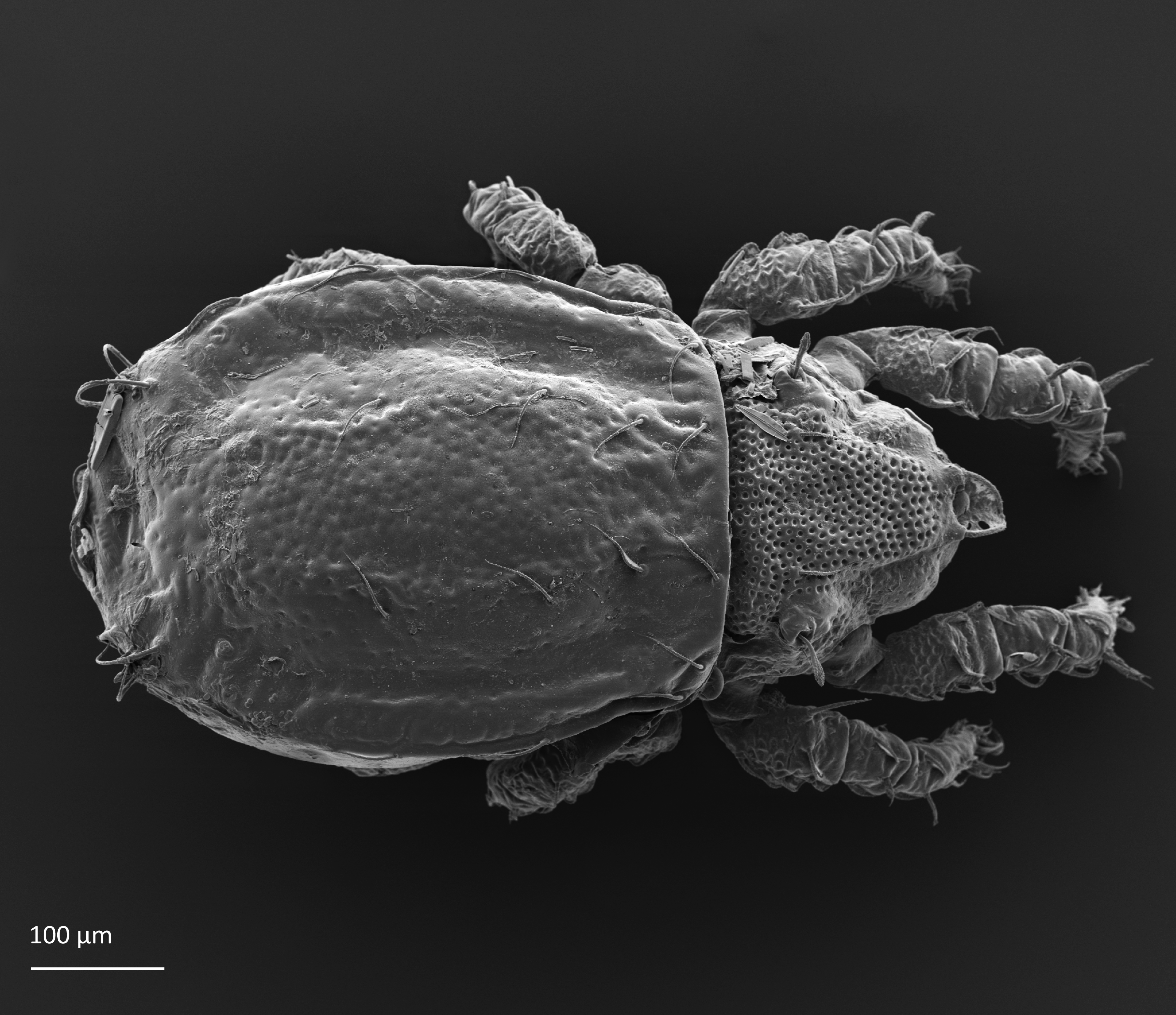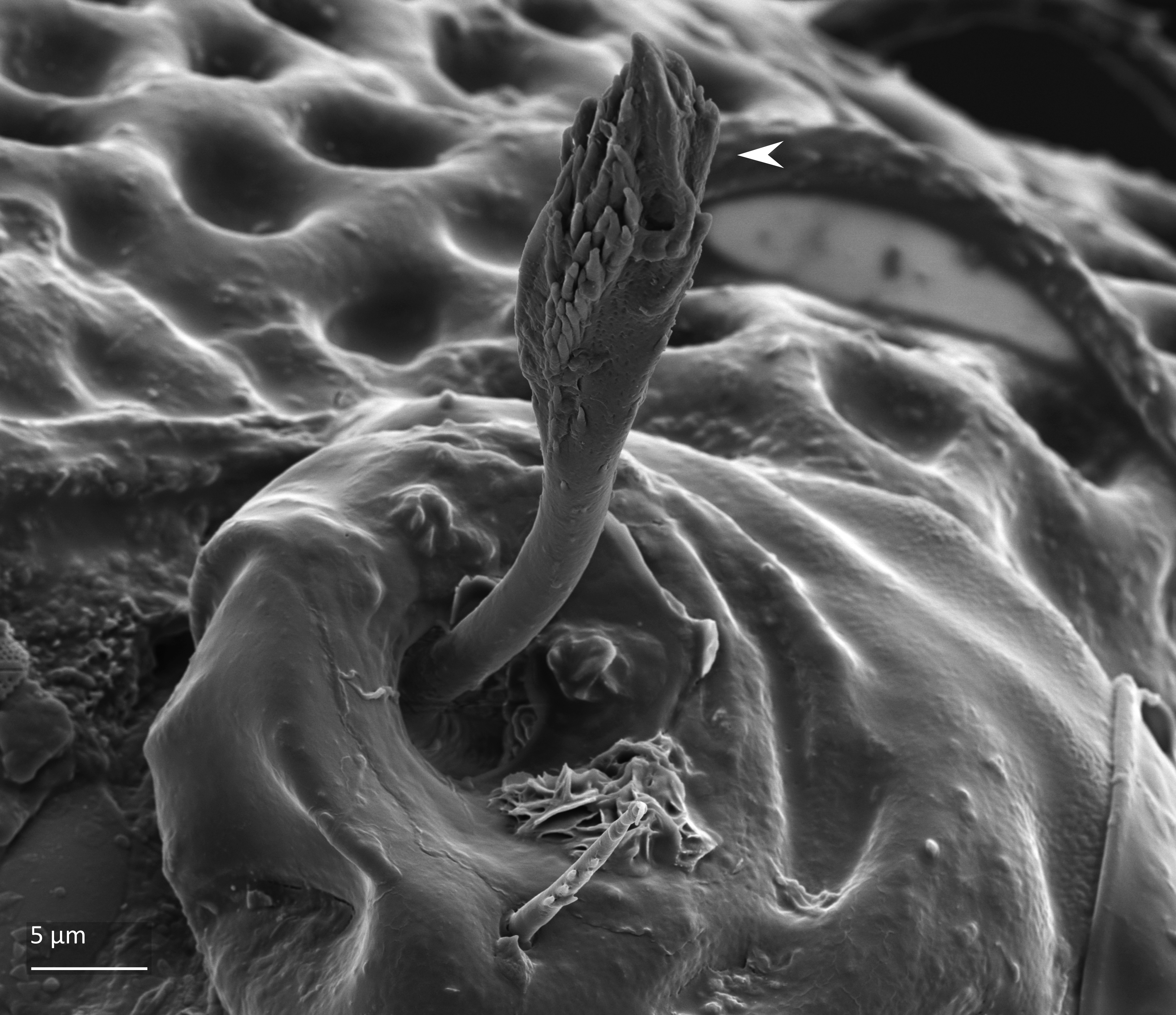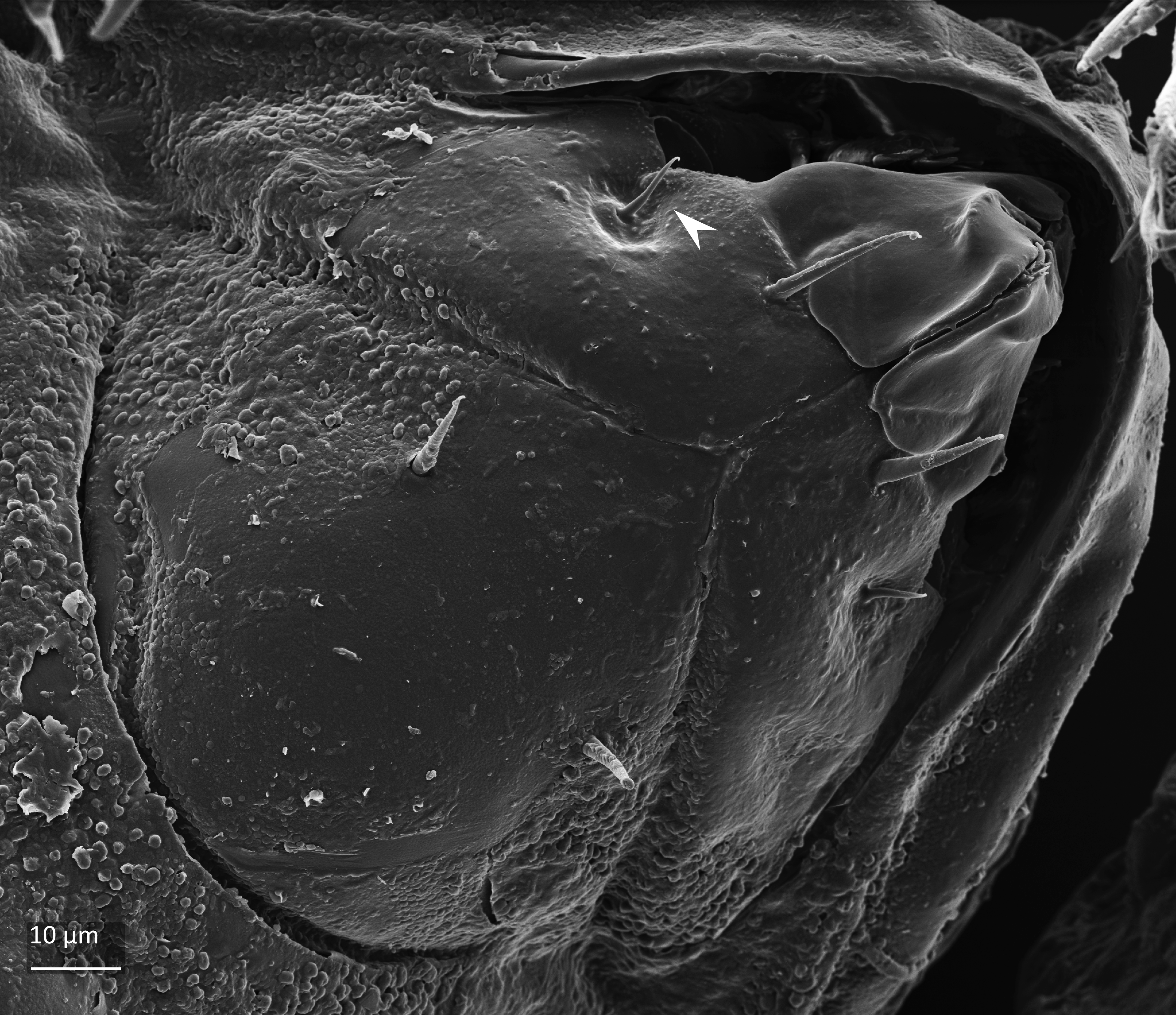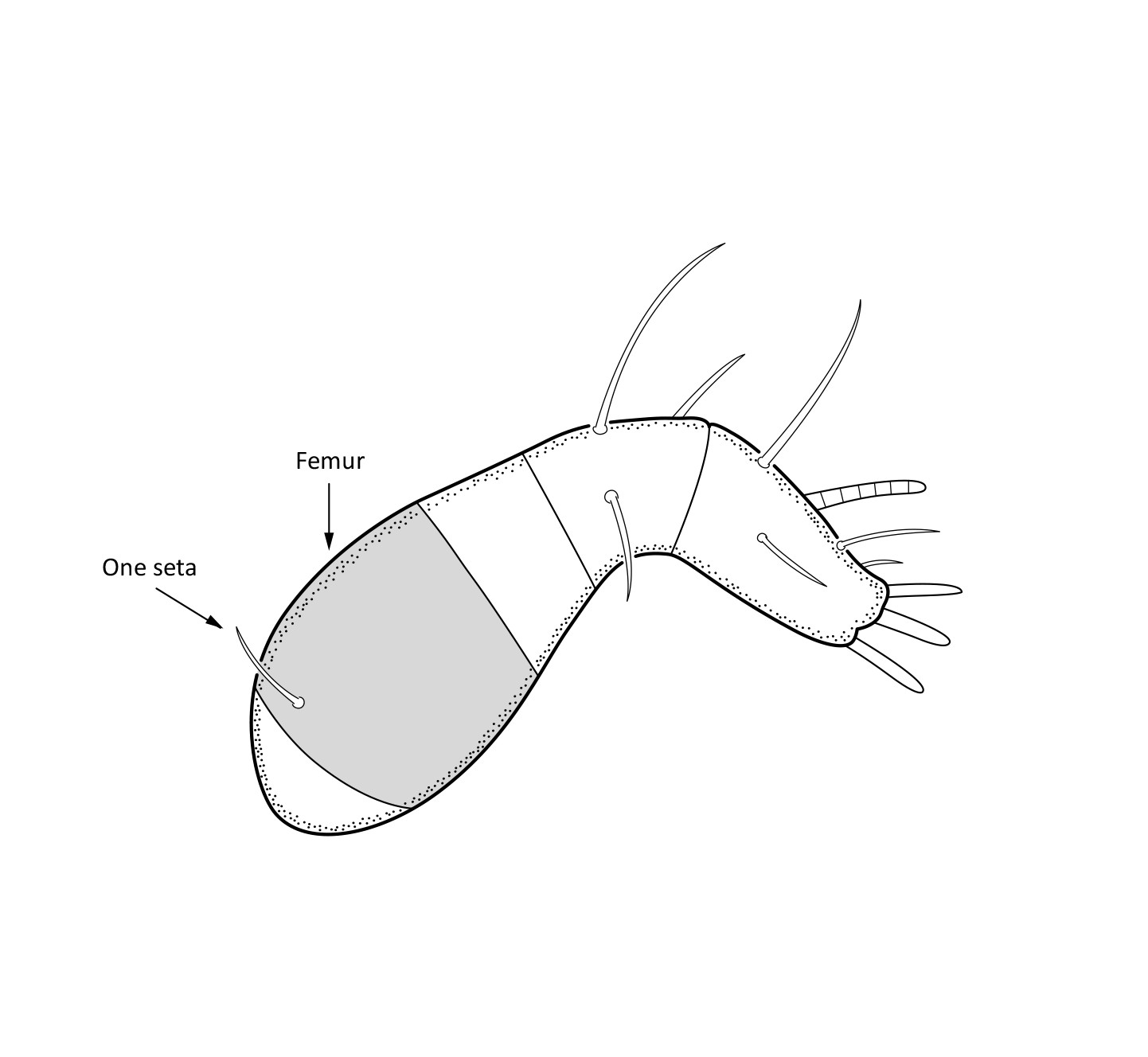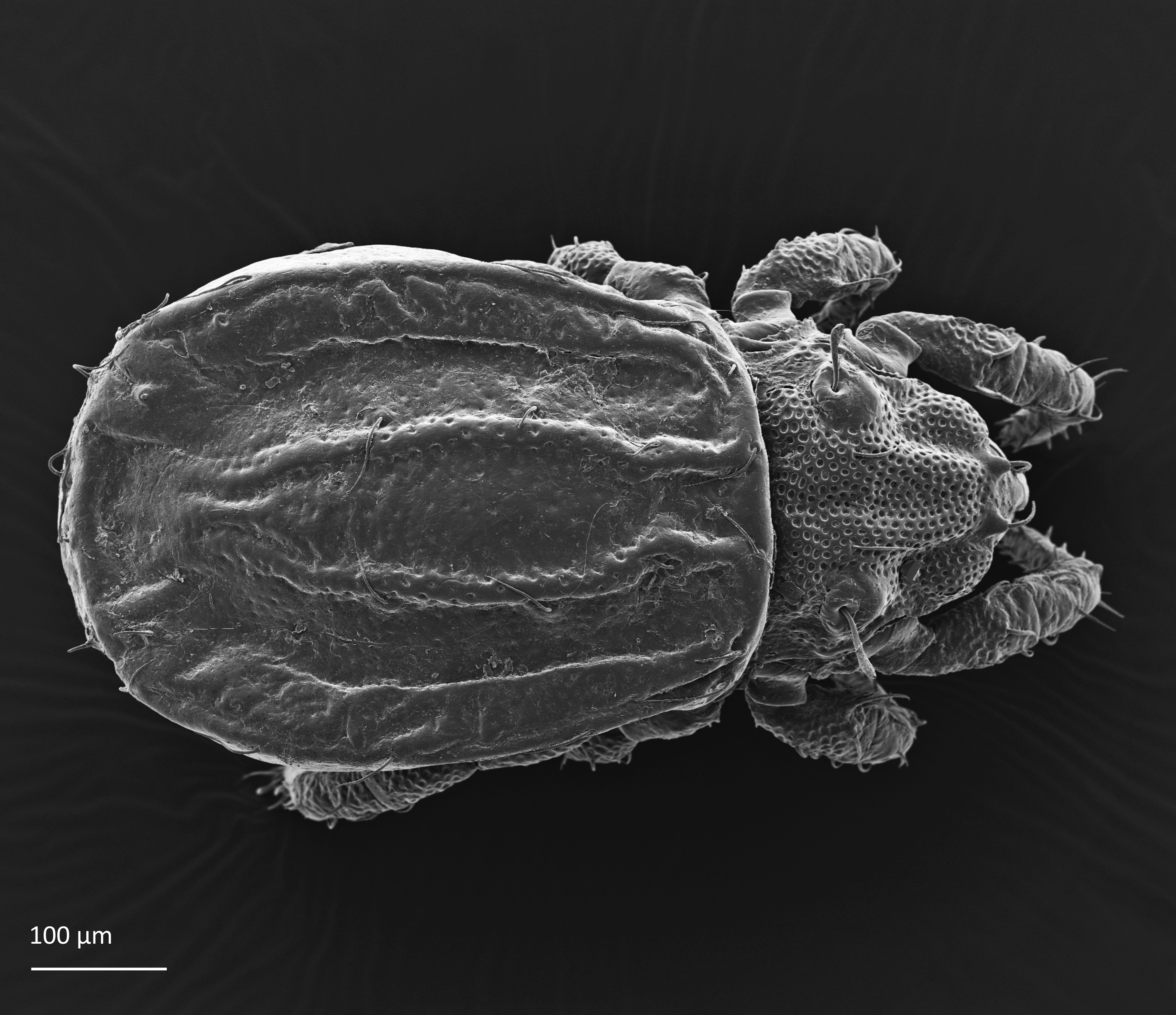Platynothrus troendelagicus
Platynothrus troendelagicus was first found in Norway, in bogs in Trøndelag, and is named after this region. However, it is also present in bogs in Western and Northern Norway. Its DNA-barcode match with specimens found in Ireland and Canada, so the species seems to have a Holarctic distribution, and to be a characteristic species of peatlands.
- Innhold
- Description
- Look-alikes
- Biology
- Ecology
Description
Adult: The length of the body is 663–722 µm, and the width is 377–436 µm. The color is dark brown. The bothridial seta is medium sized, bacilliform, with a thickened and barbed head (Figs. 1 and 2). The notogaster has three pairs of longitudinal ridges and 15 pairs of medium sized setae, with the notogastral seta f2 being longer than seta e2 (Fig. 1). The adult has one pair of hyposthomal setae m (Fig. 3) and a palp femur with one seta (Fig. 4). Three pairs of adanal setae and two pairs of anal setae are present. The leg tarsi have one claw (Seniczak et al. 2022b).
Juvenile stages: Larva: body length 314 µm, width 139 µm. Protonymph: body length 400 µm, width 185 µm. Deutonymph: body length 494 µm, width 225 µm. Tritonymph: body length 578 µm, width 286 µm. The color is whitish, however the prodorsum, the epimeres and the legs are light brown. The prodorsum is subtriangular, with the central part punctate and with small pits (Figs. 5 and 6). All juveniles have one pair of hyposthomal setae m, and a palp femur with one seta, similar to the adults (Seniczak et al. 2022b).
Fig. 1. Dorsal view of Platynothrus troendelagicus, adult; notogastral setae f2 and e2 are marked in the figure.
Fig. 2. Lateral view of an adult Platynothrus troendelagicus; the arrowhead points to the thickened and barbed head of the bothridial seta.
Fig. 3. Ventral view of the gnathosoma of an adult Platynothrus troendelagicus; the arrowhead points to one pair of hyposthomal setae m.
Fig. 4. Palp of the adult Platynothrus troendelagicus.
Fig. 5. Dorsal view of Platynothrus troendelagicus, juvenile (tritonymph).
Look-alikes
Platynothrus troendelagicus is similar to Platynothrus punctatus (L. Koch, 1879), but its adult has a clearly thicker head on the bothridial seta compared to that in Platynothrus punctatus. In Platynothrus troendelagicus the notogastral seta f2 is longer than e2 while in Platynothrus punctatus they are of a similar length. In all developmental stages of Platynothrus troendelagicus the palp femur has one seta while Platynothrus punctatus has a palp femur with two setae. All develpmental stages of Platynothrus troendelagicus have one pair of hyposthomal setae m, while in Platynothrus punctatus this number varies in the developmental stages from 1 pair in the larva to 5 pairs in the adult (Seniczak et al. 2022a,b).
Biology
The reproduction is parthenogenetic (Seniczak et al. 2022b), that is, only females are present and they are produced from unfertilized eggs.
Fig. 6. Dorsal view of Platynothrus troendelagicus, juvenile (tritonymph).
Ecology
Distribution
Platynothrus troendelagicus was first found in bogs in Norway. It also occurs in the peatlands in Ireland and Canada (Seniczak et al. 2022b).
Habitat
The species is known from peatlands, where it prefers moist habitats, like lawns and carpets (Seniczak et al. 2022b).
Findings in Norway
Platynothrus troendelagicus was first found in two Atlantic Raised Bogs, at Hitra and Høstadmyra in Trondheim, both in Trøndelag, Central Norway (Seniczak et al. 2022b). It was later also found in Atlantic Raised Bogs in Western and Northern Norway (A. Seniczak, pers. comm. 2023).
References
Seniczak A, Seniczak S, Hassel K, Flatberg KI (2022a). Morphological ontogeny of Platynothrus troendelagicus sp. nov. (Acari, Oribatida, Camisiidae) from Norway. Systematic and Applied Acarology 27(9), 1702-1722. doi.org/10.11158/saa.27.9.2
Seniczak S, Seniczak A, Kaczmarek S, Marquardt T, Ondoño EF, Coulson SJ (2022b). Morphological ontogeny and ecology of Platynothrus punctatus (Acari, Oribatida, Camisiidae), with comments on Platynothrus Berlese. Systematic and Applied Acarology 27(3), 551–580. doi.org//10.11158/saa.27.3.12
